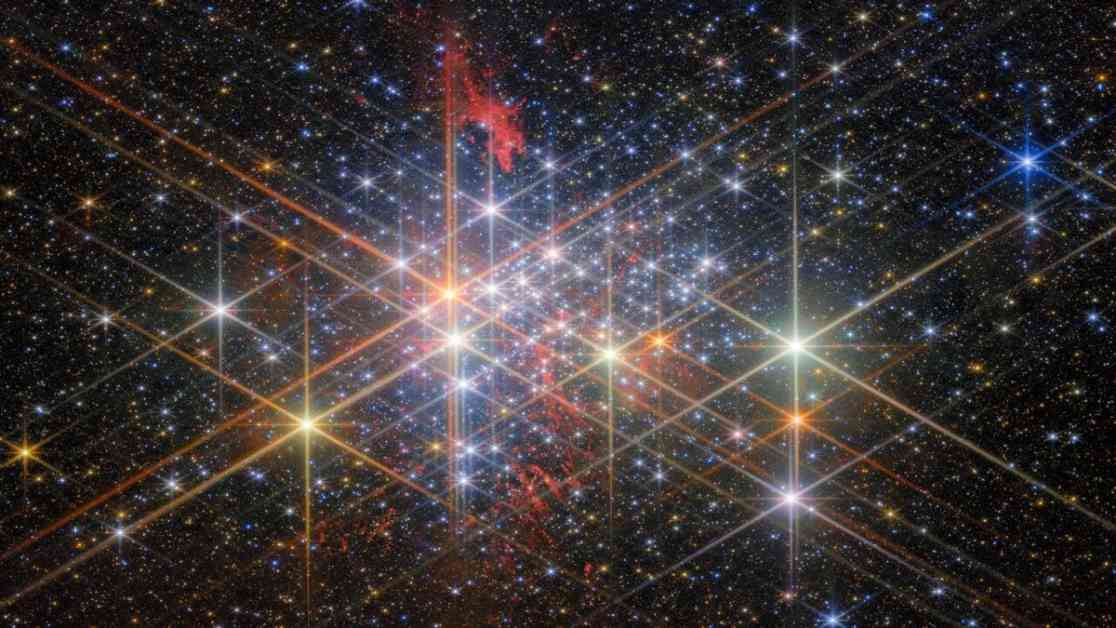The James Webb Space Telescope (JWST) has captured an incredible image of the super star cluster Westerlund 1, located 12,000 light-years away in the constellation Ara. This cluster is known as a galactic factory, producing massive stars that are 50,000 to 100,000 times the mass of our sun. Some of these stars are 2,000 times larger than the sun and would shine 1 million times brighter if they were in our solar system.
Westerlund 1 is the largest known star cluster in the Milky Way and is considered the ultimate example of a “super star cluster.” It is a rare find and offers astronomers valuable insights into the formation and evolution of massive stars. The cluster is estimated to be around 3.5 to 5 million years old, and within the next 40 million years, more than 1,500 supernovae are expected to light up Westerlund 1.
The image captured by the JWST shows the cluster in stunning detail, with twists of red gas visible within the cluster. This image would not have been possible with optical telescopes like the Hubble, as they cannot see through interstellar clouds of gas and dust. The JWST’s Near Infrared Camera (NIRCam) is able to peer through these obstacles by detecting infrared wavelengths beyond the visible spectrum.
The bright stars in the image display unique diffraction spikes due to the design of the JWST’s primary mirror. This image of Westerlund 1 provides astronomers with a glimpse into the past of the Milky Way, offering clues about the formation of massive stars and the history of our galaxy.
This discovery by the JWST highlights the importance of space telescopes in uncovering the mysteries of the universe. The ability to see beyond the limitations of optical telescopes allows scientists to study objects like Westerlund 1 in great detail, providing valuable data for further research and exploration.
The work of astronomers like those involved in capturing the image of Westerlund 1 is crucial in expanding our understanding of the cosmos. By studying star clusters like this, scientists can piece together the history of our galaxy and gain insights into the processes that govern the formation and evolution of stars.
The JWST continues to revolutionize our view of the universe, opening up new possibilities for exploration and discovery. As technology advances and telescopes become more powerful, we can expect to uncover even more secrets hidden in the depths of space, shedding light on the complexities of the cosmos and our place within it.










